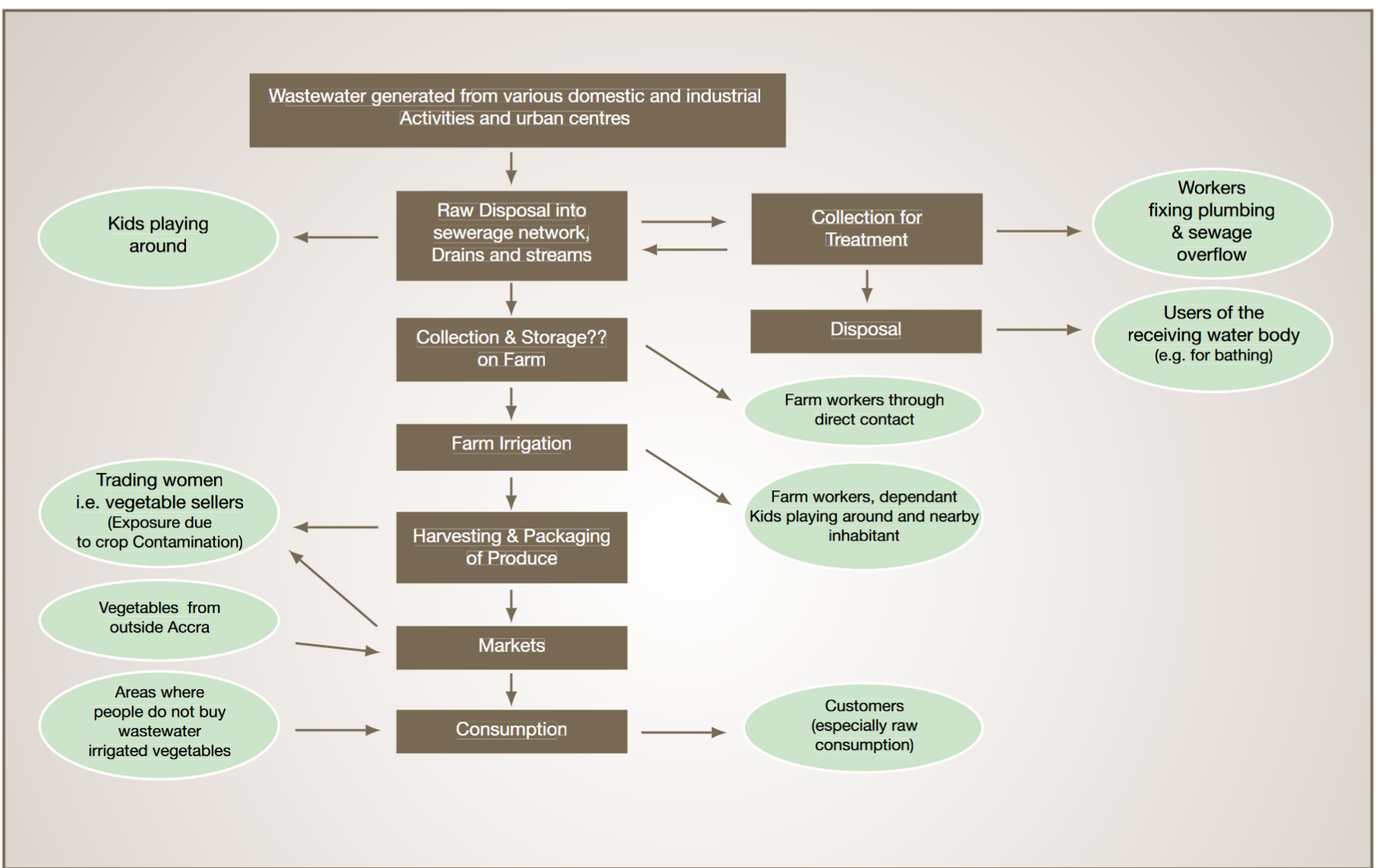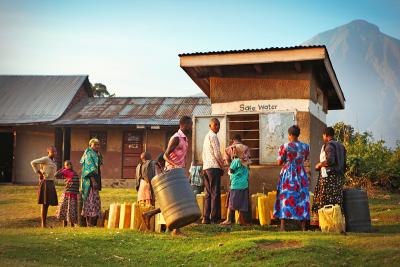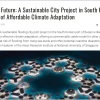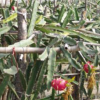Adaptation Options
Management of water in an urban context has an important effect on the general health status of the city’s population. Whereas a good water supply and sanitation improve people’s health, the absence of these may cause serious health problems for thousands of citizens. Most sub-Saharan African cities are suffering from poorly managed urban water systems (water supply, sanitation, surface waters, groundwater). Wastewater, septage and solid waste are often not properly treated and disposed of, so that they become instrumental in the transfer of diseases from one person to another. Providing full collection and treatment is usually too expensive. Reuse of (treated) wastewater in urban agriculture may create some revenues to pay for the partial treatment of the wastewater, before it is used for irrigation. Simultaneously, use of this water in agriculture prevents it from polluting receiving waters.
There is, however, also the danger of contamination of crops with pathogens. Accra is one of these cities where the urban water system is far from optimal, and therefore a number of projects are underway to improve the situation. In the current situation, only a part of the expanding city has reliable access to drinking water. Moreover,many citizens do not have access to well-functioning sanitation. Most people rely on septic tanks or some type of soakaways. The effluents from these tanks or from overflowing soakaways are discharged in open roadside drains. These drains may be an important disease transfer pathway. The small drains combine into larger ones, which ultimately end up in one of the lagoons that subsequently discharge into the ocean. Urban farmers use water from these drains to irrigate their crops, which include vegetables consumed uncooked.
For planners and decision makers it would make sense to invest the available budgets in upgrading the urban water system in such a way that the health effects are maximised. To determine which intervention is most effective, one could use a method called Quantitative Microbial Risk Assessment (QMRA). This method starts with an inventory of all possible transmission routes of infectious diseases that are somehow related to the urban water system, including wastewater reuse. It then predicts the number of disease cases for each transmission route. In the figure a schematic overview is presented of the different trans-mission routes that can lead to ‘consumption’ of pathogens (bacteria, viruses, protozoa or worm eggs). Once the contribution of each pathway is known, interventions can be designed that block transmission through that particular pathway. If a certain budget is available for investments, one can calculate for each pathway the positive health effect that would be achieved per dollar invested.
This information can be used by decision makers and planners to target the investments. It is crucial that the planners take a broad perspective on the urban water system. Usually water sector institutions are responsible for only one element of the urban water system (such as the drinking water supply or the wastewater treatment). The approach described above looks at the entire system. For example, the QMRA analysis may show that more would be gained by educating the public on how to properly wash vegetables produced in urban agriculture, rather than by investing in further improvement of the water quality of the drinking water system. The organisations responsible for these elements of the system (in this case the Ministry of Health and Ghana Water Company Limited) should therefore coordinate their actions. It may even be necessary to transfer funds from institution A to institution B, if the interventions by institution B would have a greater impact on public health.
Obviously there may be a lot of resistance to this integrated approach, since it cuts through the mandates of and barriers between institutions. To overcome these barriers the SWITCH research process includes Learning Alliances, which is is a multi-stakeholder platform of organisations active in the water sector, including government offices, NGOs and the private sector. The Learning Alliance in Accra, embarked on a process to create new strategies for urban water management, and, as part of that process, developed a vision of how the urban water system oAccra should look in 20-30 years. 
Subsequently, it identified possible future scenarios, in terms of climate change, population growth, etc., and then developed strategies that would both address the various scenarios and still reach the vision. Part of the strategy in Accra is the application of an integrated approach as described above. A QMRA can feed the participants of a Learning Alliance with information about which interventions are most effective, for discussion on which interventions are realistic, affordable and supported by all stakeholders. In this way planning and decision making are based on a rational and scientific analysis of the problem and its potential solutions. In addition, they are based on informed and joint decision making by all stakeholders. This is an example of transparency in planning and decision making.
The SWITCH partners in Accra are currently engaged in the strategy development process and are simultaneously carrying out research on QMRA, details of which will be reported elsewhere.
Suleiman Ibrahim UNESCO-IHE Institute for Water Education, Delft, The Netherlands; Henk J. Lubberding UNESCO-IHE; P. Drechsel International Water Management Institute, Accra,
Ghana; Peter van der Steen UNESCO-IHE. Urban Agriculture Magazine no. 20 – Water for Urban Agriculture.











Trending Discussions
From around the site...
“Absolutely interested! I'll connect via email to discuss reviewing and enhancing the Economic Analysis of Climate...”
Adaptation-related events at COP28 (all available to follow/stream online)
“Please check out these adaptation-related events taking place at COP28 - all available online (some in person too if...”
Shining a light for biodiversity – four perspectives to the life that sustains us. Four hybrid sessions.
“30 November to 19 December 2023 - Four Sessions Introduction The SDC Cluster Green is happy to invite you to the...”